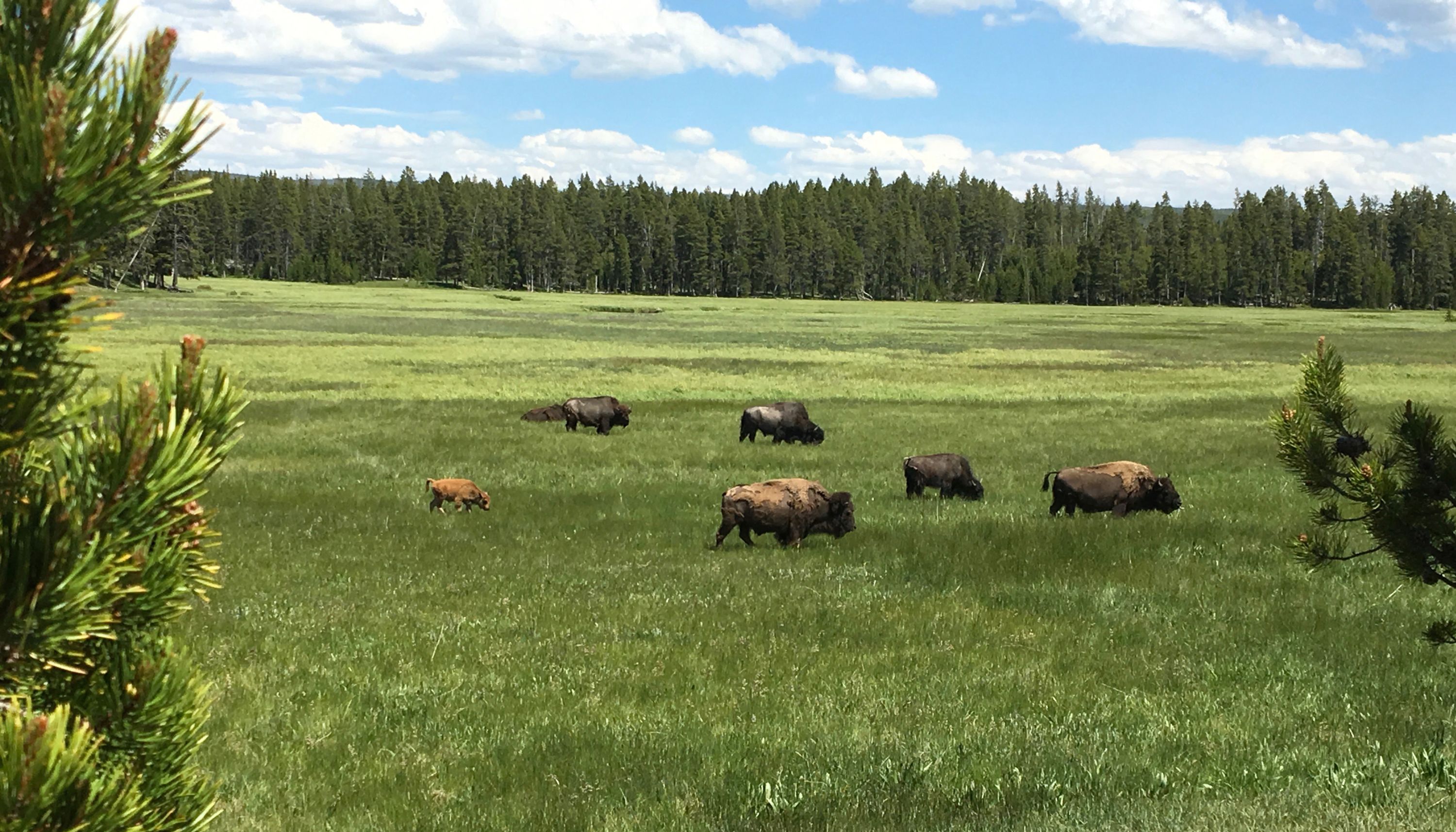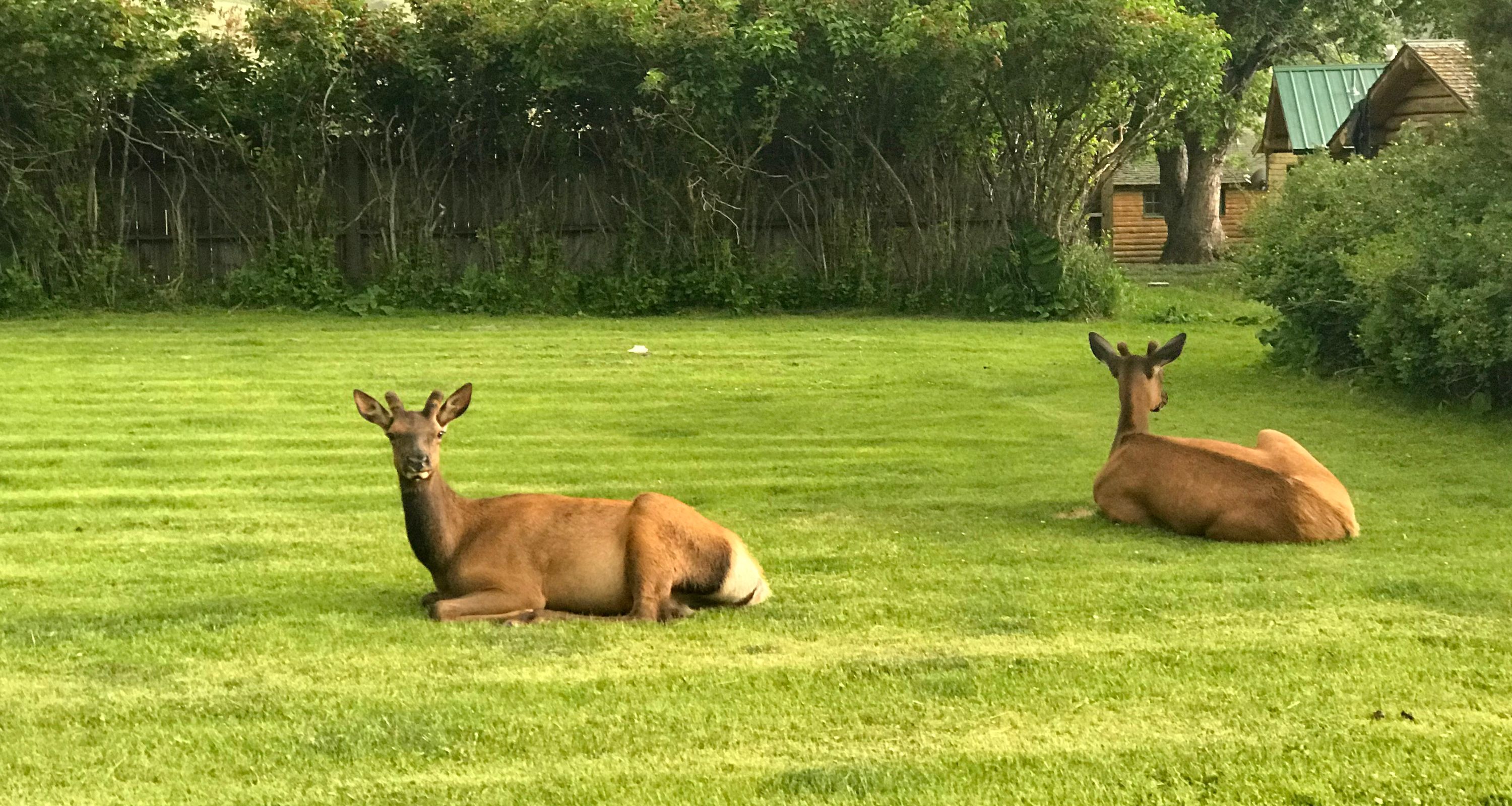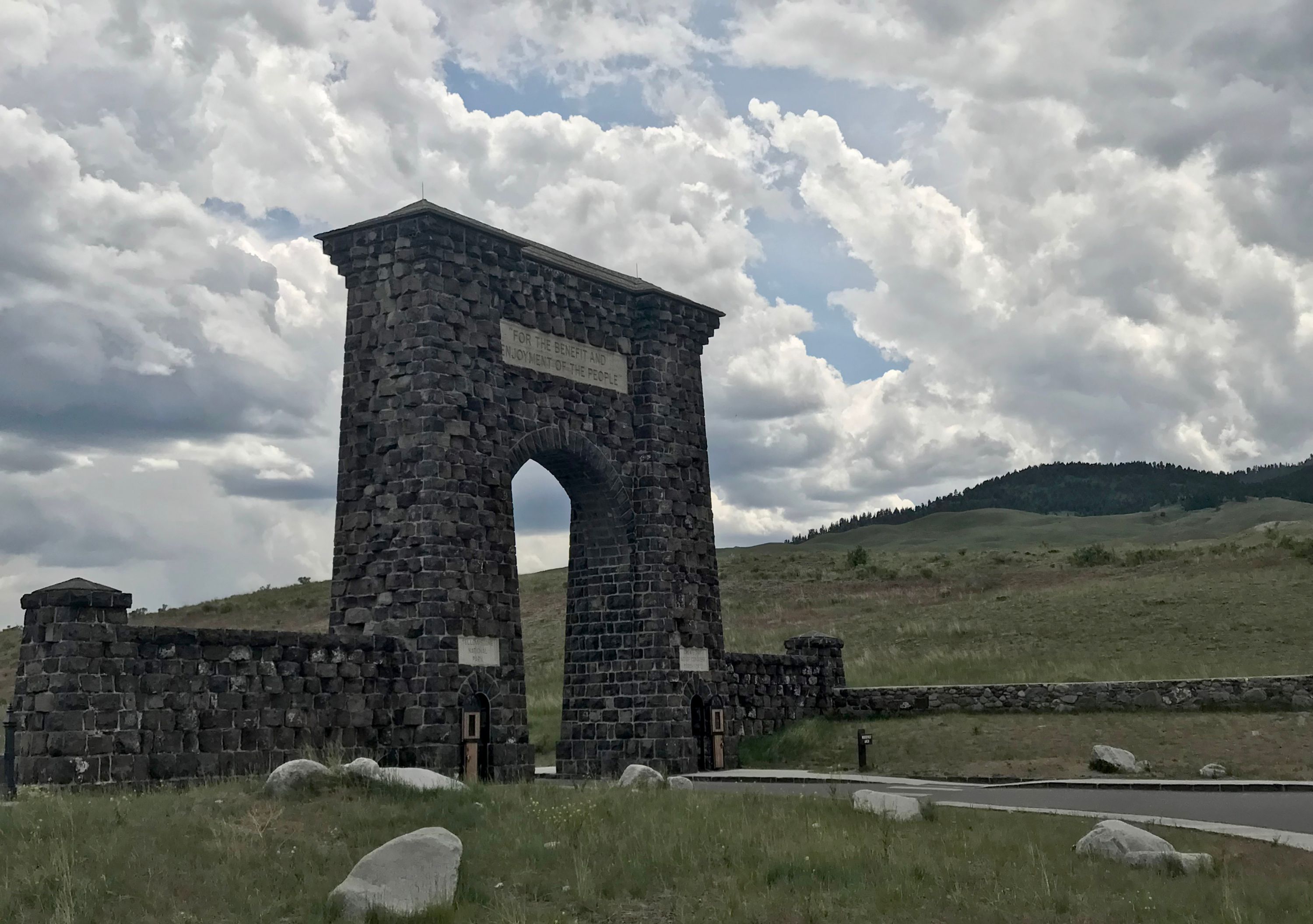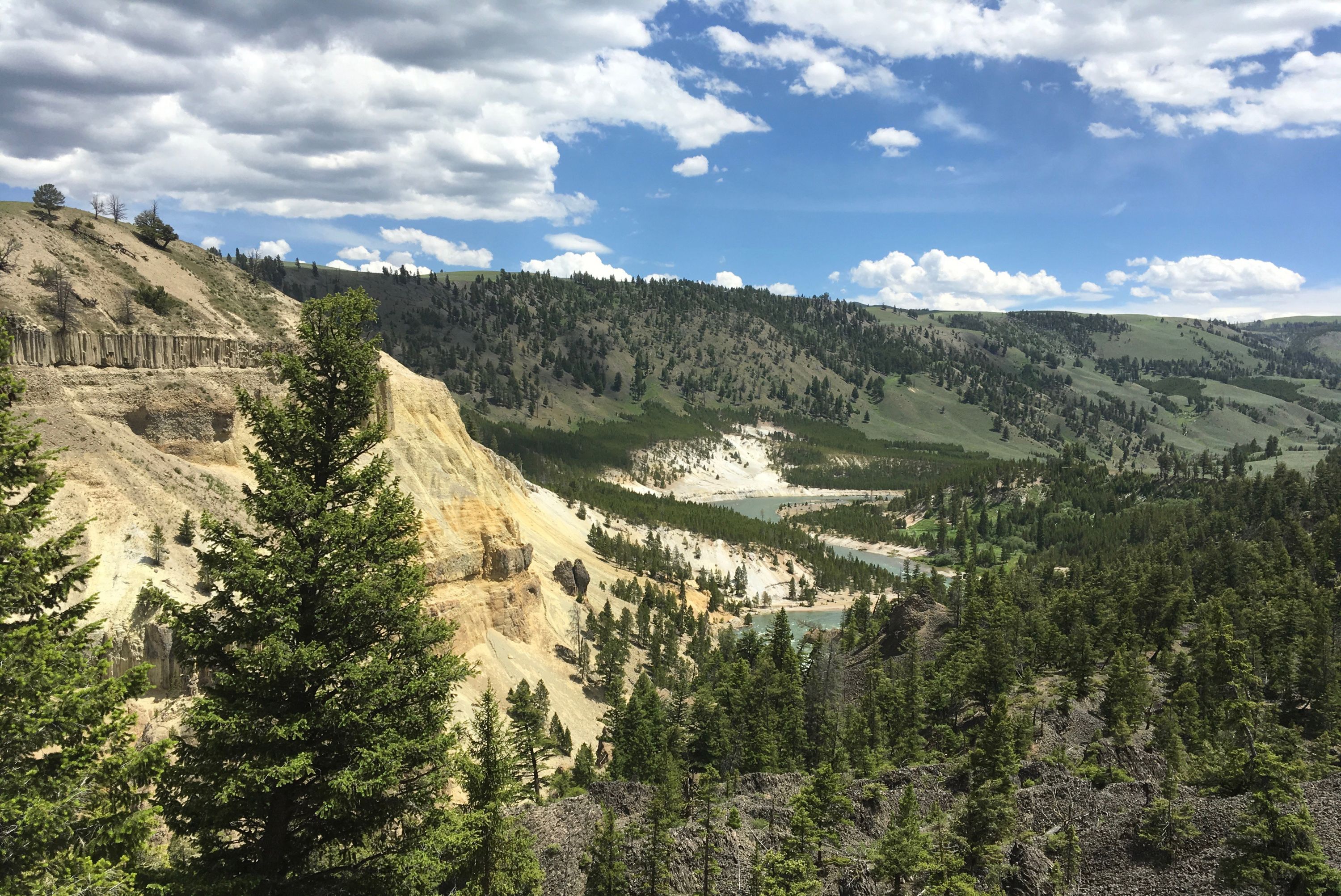IPM in Yellowstone

The thing that makes integrated pest management so powerful is that it can be adapted to manage pests in any environment – even an environment as unique as Yellowstone National Park and a pest as big as a 900-pound bull elk.
Roy Renkin, a supervisory vegetation specialist who’s worked at Yellowstone since 1979, uses IPM to manage a variety of pest problems – including elk – in the nearly 3,500-square-mile park in the northwest corner of Wyoming.

“Some people don’t think of wildlife management as an IPM issue,” he said. “To them, IPM is just for small stuff. But bear management or elk management is just a big exercise in IPM.”
Take the elk. Herds roam freely in the park, and some hang out in the built-up area around the northern entrance where many of the park’s historical buildings house the Visitor’s Center and administrative offices.
“Back in the day, they planted these Kentucky bluegrass lawns and the elk love it,” Renkin said. “In the spring, cow elk come down and calve here because it’s a pretty safe place away from predators.”
So scattered among the picnic tables that dot the area’s lawns, elk cows and calves rest or graze as hundreds of visitors and park staff move about nearby. Taped to the inside of the door in Renkin’s building one recent day was a sign warning “Elk Outside. Use Other Door.”
“The problem with the elk is that people get kicked if they get too close, and in the fall the bulls show up to mate and you’ve got all these big bull elk fighting and grappling with each other to establish dominance,” Renkin said. “It’s dangerous.”
Integrated pest management recognizes that pests are context-dependent. Elk in the wild aren’t pests. Agitated elk around the Visitor’s Center are.

“So what’s the IPM plan for this?” Renkin asked. “We’re not going to build a fence. We’re not going to modify the habitat and potentially swap one problem for another. There’s just not much you can do with the elk.”
But there is an IPM solution. If you can’t manage the elk, manage the people.
“About 15 years ago, we started assigning park employees to roam the area to herd people away from the elk,” Renkin said. “It’s an avoidance strategy and it’s proven to be an effective way to manage it.”
Traditional Pest Problems, Too
Of course, not all the park’s pest problems are as unexpected as elk. Like the rest of the West, Yellowstone National Park has noxious weeds and a growing problem with European winter annual grasses that emerge and set seed before the area’s native perennials have a chance to bloom.
“These winter annual grasses are game changers,” Renkin said. “You can see them spread.”

The park has a number of research projects under way looking at control and restoration, and is finding success using a persistent herbicide and reseeding the area with native vegetation.
“We collect native seed where we can.” Renkin said. “We do purchase some locally for the border areas.”
Renkin personally and the National Park Service generally are hesitant to bring non-native species into the park for biological control efforts or other purposes. In fact, several of the park’s current restoration efforts are attempts to undo deliberate introductions in the past.
“In the 1930s to the ’50s, they stocked the rivers here with brook trout and rainbow trout for anglers,” Renkin said. “The rainbow trout hybridized with the native cutthroat trout, and now there’s a lot of effort going on to try to undo that and restore the native cutthroat populations.”
Yellowstone was responsible for other self-created problems in the past. It used to operate open-pit dumps, for instance, which attracted huge numbers of bears. And because visitors want to see bears, the park even built viewing platforms around the dumps. That ended in 1970 and now bears get to be bears, and the park manages the bears like it does elk – limiting interaction between people and the grizzly and black bear populations to minimize problems.
Housing Pests, Too
A big part of Renkin’s IPM work is dealing with pests inside campgrounds, hotels and employee housing in the park, and educating the concessioners that manage those structures about integrated pest management.
Take bed bugs. Like in any environment where many people come and go, bed bug outbreaks occur.
“The concessioners and their pest control operators wanted to fumigate every six months as a preventative measure,” he remembered. “It took a lot of patience, education and coaching to get people to realize that we’re not spraying preventative treatments, but we’ll deal with actual problems as they arise.”
If bed bugs were found in one employee dorm room, the pest control operators also wanted to spray all the adjacent rooms, including those above and below.
“That one took time, too, but we convinced them, you treat that room, and monitor the other rooms,” Renkin said. “No self-respecting bed bug is going to be very far from its next meal.”
Another biting insect the park deals with are swallow mites, who, as the name suggests, prefer to feed on swallows. The park’s barn swallows build mud nests in the eaves of buildings and when they fly south for the winter they inevitably leave some mites behind in the nests.
“The problem is the buildings get occupied in April before the swallows return in May,” Renkin explained. “And you have some very hungry mites.”
The park can put netting and bird spikes up to keep the swallows from nesting on a building, but they do have to nest somewhere.
“So we ask, ‘Where can we tolerate them?’” Renkin said. “We allow them to nest on supply sheds and outbuildings that people don’t occupy and keep them off the buildings people do.”
And if that sounds like IPM, it is.
